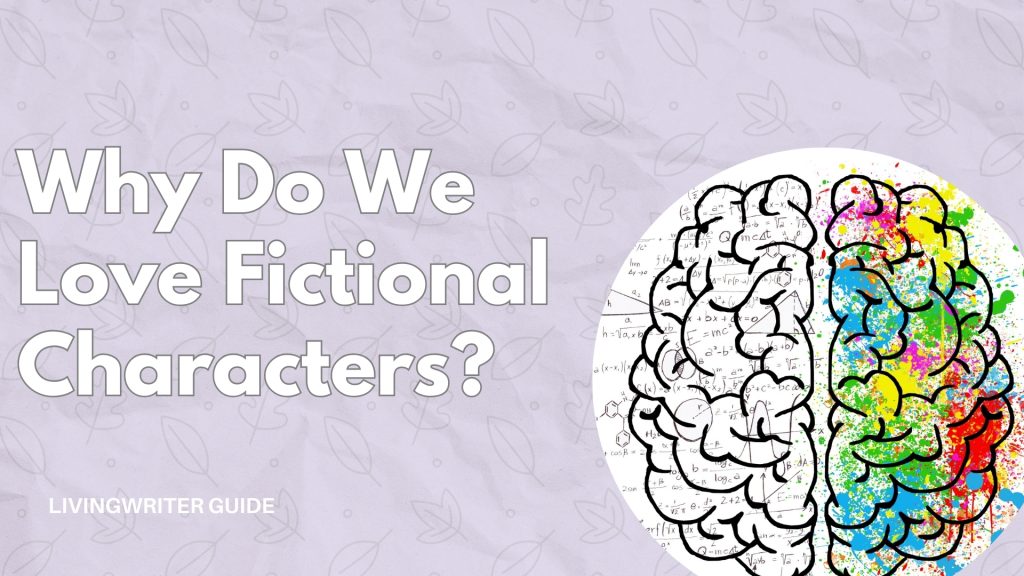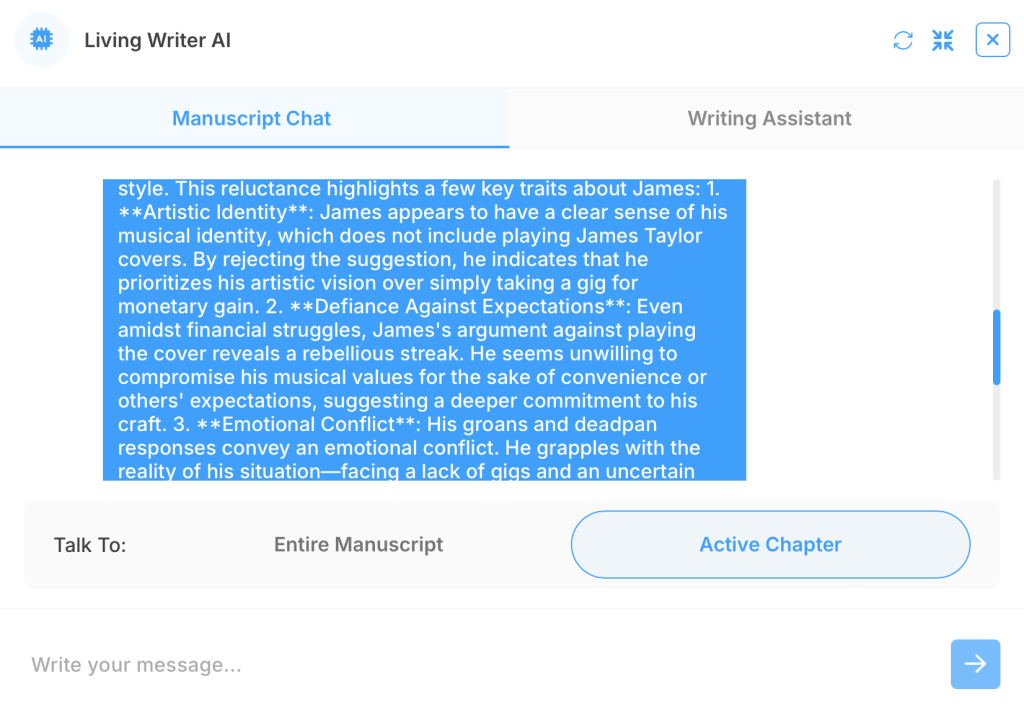Why We Love Fictional Characters – 4 Psychological Reasons

Have you ever been watching a film or reading a book and felt a surge of joy as a character accomplished something important to them? Or moved to tears when a character that you deeply relate to died? Most of us have, and there is a reason we can feel real life emotions for people that don’t physically exist. This love for fictional characters is the topic of today’s article.
We connect with fictional characters through a complex mix of empathy, sympathy, and shared human experiences. We project our own emotions and experiences onto characters, allowing us to feel their joys and sorrows as if they were our own. Even when characters are vastly different from us, we can connect with them through universal emotions, struggles, and our particular attachment needs.
In short, when a character is well-written enough, we can genuinely experience their emotions and want to help them just like we would a real person. And by understanding the psychology we can not only understand character bonding, but write better characters as well. So, without further ado, let’s dive into why we love fictional characters.
Table of Contents
Why We Love Fictional Characters
To a certain degree, most of us feel connected to certain characters throughout fiction in some real way. When you follow a character like Robb Stark throughout their story, it’s nearly impossible not to be moved. On some levels, this makes perfect sense – The writer has done a good job!
But how and why do writers have the ability to make us feel real emotions for people that don’t even exist? Well, it comes down to our ability to put ourselves in these fictional folk’s shoes, imagine what they’re feeling, and possibly even desire to help them.
Here are five reasons we love fictional characters.
1. The Power of Empathy
Empathy is the ability to essentially “walk a mile” in someone else’s shoes and to understand and share the feelings of another person. And it’s not just something that happens in real life. We’re perfectly capable of imagining and feeling the highs and lows of a fictional character.
This is aided by the fact that, as readers and viewers, we sub-consciously fill in the blanks of characters’ lives that we haven’t been shown, which helps to strengthen the relatability to how they feel and the feelings of empathy we may have.

These sorts of universal experiences that most can imagine help to create compelling and relatable characters. For instance, in Harry Potter and the Sorcerer’s Stone, we experience the young wizard’s isolation and ostracism at the Dursleys’ home. As readers, we empathize with Harry’s loneliness and yearn for him to escape his dreary existence.
2. Sympathy For Characters
Sympathy is a feeling of concern or sorrow for another person’s misfortune or hardship. It’s understanding that someone is going through a hard time and feeling compassion for them. However, unlike empathy, sympathy doesn’t necessarily require you to truly understand or share the other person’s feelings.
It’s more of an acknowledgment of their suffering and a desire to offer support or comfort. When we’re empathetic to what a character is going through, it’s likely we may also be sympathetic. And when that happens, it doesn’t particularly matter that the character is fictional. The feelings will be the same as if the character were a real person, perhaps even a friend.

We bring our own baggage to the table, and this can influence how we react to a character’s situation. For example, someone who has experienced bullying may feel a particularly strong connection to a character who is victimized.
3. Understanding Attachment Styles
So, as mentioned above, there is some crossover between how we experience real life relationships and connections to fiction. But there are some very important differences that play a key role too. For example, where characters are concerned we have a “one-sided” admiration known as a “parasocial interaction.”
Check out the study I’m referencing (and many more) here: Adult Attachment and Engagement with Fictional Characters.
In other words, no matter how much you admire a character, they don’t admire you back. This is also common for celebrity crushes and things. Without receiving anything tangible in return, what is the internal drive that anchors us to certain characters?
Well, our early relationships with caregivers shape our adult attachment styles. These styles can be categorized into two main categories:
- Attachment Anxiety: Reflects concerns about rejection and abandonment. Often seeking relationships and validation.
- Attachment Avoidance: Reflects a tendency to suppress intimacy needs and prioritize independence.
People with attachment anxiety often experience very strong needs for attachment and seek attention, protection, and security from others. It’s also common for them to need emotional closeness, lots of reassurance, and comfort. And in general, they tend to be quite preoccupied with relationships.

On the other hand, high attachment avoidance people use defense mechanisms that deny the need for intimacy and instead strive for self-reliance. This can manifest as an unwillingness to show vulnerability, intimacy, and commitment.
People with high attachment anxiety and low avoidance tend to form the strongest parasocial bonds with fictional characters. This is because these individuals often seek out and invest emotionally in relationships, including fictional ones, to fulfill their unmet attachment needs.
Conversely, individuals with high avoidance tend to identify with characters who embody self-reliance and independence. They may use character identification as a way to manage their own insecurities. However, considering a fictional character isn’t capable of “leaving them,” it’s possible they may feel safer making an emotional investment in a character.
4. The Role of Escapism
Reading is a way to escape reality for almost everyone – Through immersion in fictional worlds, we can leave behind our own world for a while. Common character archetypes resonate with readers, and imperfections can make characters more relatable and endearing.
However, this common thing can take on another level of meaning when viewed through the lens of the attachments discussed above.
For example, people with high attachment avoidance tend to identify with characters who embody self-reliance and independence and may use these character identifications to manage their insecurities. And again, a fictional character does not require commitment or upkeep.
How To Write Characters People Love
Until now, we’ve talked about what causes people to feel real emotions for fictional characters. Now, I want to briefly touch on how you can write characters that people can’t help but relate to.
Motivation – Want Vs. Need
Character motivation is a cornerstone of a relatable character. When readers know what a character wants and what they need to be truly happy, they can strive for them to succeed. While a character’s want drives the plot forward, their need fuels their emotional journey and character arc.
- Want: A character’s want is their external goal or desire. It’s the tangible, observable objective they pursue throughout the story. For example, in The Lord of the Rings, Frodo wants to destroy The Ring.
- Need: A character’s need is their internal growth or emotional journey. It’s the underlying psychological or spiritual transformation they must undergo. In The Lord of the Rings, Frodo’s need is to overcome fear, doubt, and the corrupting influence of the Ring.
Why the Distinction Matters
Understanding the difference between wants and needs allows writers to create more complex and compelling characters. Balancing external goals with internal growth helps characters resonate with readers on an emotional level.
A character who merely pursues a goal without addressing their underlying needs will feel one-dimensional and unsatisfying. By recognizing and addressing both wants and needs, they’ll be a lot more meaningful to readers.
Relatable Flaws And Vulnerabilities
Relatable flaws and vulnerabilities help readers genuinely empathize and sympathize with your character. So, humanize your characters: Give your characters flaws and insecurities that make them relatable. Everyone has weaknesses, and acknowledging them can create a deeper connection with readers.
Also, explore your character’s emotional range. Allow them to experience a wide spectrum of feelings, from joy and hope to sorrow and despair. When readers are invested in your character, they will experience these highs and lows right along with them.
Show, Don’t Tell
Show, don’t tell is something we hear a lot as a general rule. And with good reason. It’s important, especially for evoking emotions. It’s not always easy to do well, but it’s a relatively simple idea. When possible, instead of telling the reader something outright, let a characters actions or words “show them.”
For example, instead of saying, “He was angry,” make the character do something or say something so that the reader knows they’re mad without you saying it.
To use a real-world example from A Game of Thrones, George R.R. Martin shows Ned is a man of honor through his actions and choices. Instead of being told these things, we see Ned’s unwavering adherence to his sense of justice and honor.
Here are some tips for you to do the same things in your writing:
- Immerse the Reader: Use vivid descriptions and details to bring your characters to life.
- Dialogue and Action: Reveal your character’s personality through their words and actions. Check out How To Write Dialogue In A Story for a deep dive.
- Subtlety: Let the reader infer a character’s emotions and motivations rather than explicitly stating them.
Backstory and History
The things that have happened to your character should naturally inform what they’re doing now. After all, real people are an amalgamation of everything that has ever happened to them, and your characters should be, too. Even if all of the back story doesn’t make it into the finished product, you, as the writer, should write it somewhere.
Let’s again look at A Game of Thrones, for example.
Daenerys’s upbringing in exile caused her to endure hardship and cruelty, which shaped her character and aspirations. Her experiences of oppression and injustice fuel her desire for free will, power, and independence. This portion of her backstory informs her actions throughout the series.
Here are some things to keep in mind as you write:
- Shape the Present: A well-developed backstory can explain a character’s motivations, fears, and behaviors.
- Relatable Experiences: Use relatable experiences from the past to make your characters more sympathetic.
Leverage LivingWriter
LivingWriter (start a free trial by clicking the link to the left) is your best friend for developing characters, plotting their arcs, or analyzing their psychological motivations. And can help you reach your full potential as a writer. I’ve written at length about How To Write Unique Characters With LivingWriter, and I’m going to give you the rundown here.
Character AI Tools
LivingWriter’s AI is unique because it is designed to help you do your best writing without writing to you. It can help identify and improve areas where you’re weak with your characters, bolster your strengths, and more.
LivingWriter is your all-in-one, jack-of-all-trades writing software, and it has several features to help you write characters that people cannot help but relate to and love.
AI Elements
With the click of a few buttons, you can give the software some basic info on what you’re looking for and get a character profile back in a matter of moments. You can describe things with plain language, with no need for prompts, and use as little detail as you’d like.
You May Also Like: How To Create AI Elements on LivingWriter
Here is an example of just how much life LivingWriter can add to an initial idea. First, let’s start with describing a character.

You also have the option to include an AI-generated image based on the character, which I recommend. Even if readers never see it, an image helps add a lot of personality to the character. Here is what was generated based on the description above:

The image, some descriptions of his appearance, and additions like “its surface adorned with stickers from various cities he’s visited.” expand and add subtle details to the character that really flesh them out.
Manuscript Chat Features To Refine Characters
Once you’ve begun writing, you can chat directly with your manuscript to ask research-based, theoretical, or logistical questions about your plot and characters. The chat understands your manuscript and everything within and can offer you very tailored feedback about specific things instead of the general answers and advice you get with outside AIs.
You May Also Like: How LivingWriter’s AI manuscript Chat works
For example, I asked, “How does James’s Character come across that despite struggling and being rather desperate, he is reluctant to play a gig where he would have to play a James Taylor song?” And here is the answer I got:

The chat feature gives a full rundown of the characters and what the active chapter says about them, including several insights and examples. There is more info above and below than can be seen in the picture above, and you’ll always have these insights at your disposal.
Integration Of Characters Into The Manuscript
LivingWriter brings your characters to life inside the manuscript. Whenever you type the name of a character (or location or object you’ve added) into your manuscript, it’s automatically pulled in like a link.

Clicking it will show you a rundown of the character, including their description, any nicknames you’ve added, and the character’s relationships with other characters. All of this can be edited from this quick menu as well.


Having your character’s info accessible in the manuscript keeps their arc at the forefront of your mind as you write. Each time you mention them (by full name or a nickname), you’ll have access to all their info and the chance to refine them as they change throughout the story.
Conclusion
Understanding the role of attachment styles in character engagement can provide valuable insights into why we connect with fictional characters on an emotional level. By recognizing the psychological factors that drive our fascination with stories, we can better appreciate the power of narrative to shape our thoughts, feelings, and behaviors.